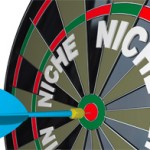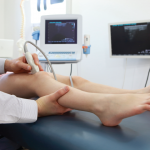The experts point to the added advantage of establishing a better rapport with the patient. It also can be used as patient-teaching opportunity.
“The patients really like one-stop service,” notes Dr. Kissin. “They can see for themselves the pathology that you are evaluating, giving them greater confidence that the treatment was accurate and appropriate.”
Costs to the Practice
The initial costs of acquiring an ultrasound machine for a practice will range from as low as $30,000 to nearly $200,000, based largely on the resolution required. Both Drs. Samuels and Kissin do not think the higher-priced machine is needed in rheumatology practices.
“Ten years ago, the differences in image quality between the low- and high-end machines was dramatic,” says Dr. Kissin. “Now there is only a small difference in resolution. A rheumatologist can obtain all the information they need to make decisions with a cheaper, portable machine.”
In addition, the amount of cash that is required up front is based on buying the machine outright. A lease may fit into the practice’s cash flow easier.
The ongoing costs are very small. Mostly it will be for inexpensive consumables like the conductive gel and cleaning the probes between patients.
Training Considerations
If you decide to purchase an US machine for your practice, the next step will be to get the training needed to properly operate the machine and read the images. The initial instruction is available from many sources, including the ACR, academic medical centers, private education companies and US manufacturers. Most are a weekend in length. However, this is usually only the start of the process.
“How fast a person gets up to speed is very much dependent on the individual’s abilities,” says Dr. Samuels. “Some are very technically inclined while others have trouble with spatial orientation, meaning that they may need more time to learn.”
He suggests that you will then need time to practice. Using the machine on yourself, your staff, family, or even on your dog should help speed up the learning process. Those interviewed were in agreement that it is impossible to read a book and become proficient. A person needs to know what normal looks like on an ultrasound before they can begin to understand abnormal.
“The weekend seminars usually don’t get much past showing you which buttons to push, what structures look like, and how to hold the transducer,” says Dr. Kissin. “It then takes six to 12 months of training afterwards to become proficient.”



